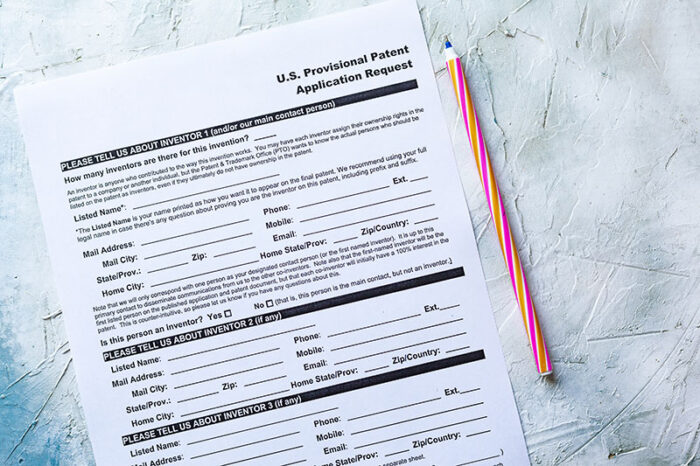
In today’s highly competitive and innovative world, protecting intellectual property is crucial for inventors and entrepreneurs. Patents play a vital role in safeguarding inventions, fostering innovation, and providing exclusive rights to their creators. Understanding the importance of patents and the different types available is essential for anyone looking to bring their inventions to market successfully.
The Benefits of Patenting Your Invention
Obtaining a patent for your invention comes with numerous advantages. Firstly, it grants you exclusivity, allowing you to prevent others from making, using, or selling your invention without your permission. This exclusivity gives you a competitive edge in the market, enabling you to fully capitalize on your invention’s potential.
Patents also open doors to various opportunities for inventors. With a patent in hand, you have the option to license your invention to others, allowing them to use it in exchange for royalties or other financial agreements. Licensing can provide a steady income stream and expand the reach of your invention beyond your own capabilities.

Understanding the Basics of Patents
Before diving into the intricacies of patent types, it’s essential to understand what a patent is and how it functions. A patent is a legal document granted by a government authority that gives inventors exclusive rights to their inventions for a limited period, typically 20 years from the filing date.
There are three main types of patents: utility, design, and plant patents. Utility patents protect functional and useful inventions, such as new machines, processes, or compositions of matter. Design patents, on the other hand, safeguard the aesthetic and ornamental aspects of an invention.
Criteria for Patentability
To obtain a patent, your invention must meet certain criteria. These criteria include novelty, non-obviousness, and utility. Novelty means that your invention must be new and not previously disclosed or publicly known before the filing date of your application.
Conducting a prior art search is crucial to ensure the novelty of your invention. Prior art refers to any existing knowledge or invention that is similar or related to your invention. By thoroughly researching existing ones, scientific literature, and other sources, you can assess whether your invention is truly novel and non-obvious.

Conducting Prior Art Research
Conducting a comprehensive prior art search is an integral part of the patenting process. It involves examining existing ones, scientific journals, databases, and other resources such as InventHelp to identify inventions that are similar or related to yours.
Several tools and resources can assist you in conducting a thorough prior art search. Online databases, such as the United States Patent and Trademark Office’s (USPTO) database or international databases like WIPO’s PATENTSCOPE, provide access to millions of patents and patent applications worldwide.
The Patent Application Process
Once you have conducted a prior art search and determined that your invention is novel and potentially patentable, the next step is to file an application. This application process can be complex, requiring attention to detail and clear communication of your invention’s novelty, non-obviousness, and utility.
The essential steps in filing a patent application include preparing a detailed and well-structured description of your invention, creating drawings or diagrams if necessary, and drafting claims that define the scope of your invention’s protection.

Working with an Attorney or Agent
Seeking professional legal assistance during the patenting process is highly recommended. Attorneys or agents specialize in intellectual property law and have expertise in drafting and filing applications.
An attorney or agent can help you navigate the complexities of patent law, conduct a thorough prior art search, draft claims, and respond to office actions from patent examiners.
Provisional vs. Non-Provisional Applications
When filing an application, you have the option to choose between a provisional application and a non-provisional patent application. A provisional application is a simpler and less expensive option that establishes an early filing date and allows you to use the term “patent pending.” However, it does not provide the rights on its own and must be followed by a non-provisional application within one year to obtain its protection.
A non-provisional patent application is the standard application that leads to the grant of one. It requires a more detailed description, formal claims, and formal drawings, providing a comprehensive disclosure of your invention.

Examination and Prosecution
After filing a non-provisional application, it undergoes examination by an examiner. The examiner reviews the application, conducts a search for prior art, and assesses the invention’s compliance with patentability criteria.
Responding to office actions and making necessary amendments are crucial to advance the prosecution of your whole application. This may involve providing additional information, clarifying claims, or arguing against rejections.
Utility Patents
Utility patents are the most common type and they protect the functional and useful aspects of inventions. They cover a wide range of innovations, including machines, processes, compositions of matter, and new and useful improvements thereof.
When applying for a utility kind, it’s crucial to provide a clear and detailed description of your invention, including its structure, operation, and any unique features or advantages. The claims section of your application defines the boundaries of your invention’s protection and should be carefully drafted to encompass its key elements while avoiding any prior art or potential challenges.

Design Patents
Design patents protect the aesthetic and ornamental aspects of an invention rather than its functional features. They cover the unique and original visual appearance of an object, such as its shape, configuration, pattern, or surface ornamentation.
To obtain a design patent, your invention must have a new, original, and ornamental design that is not merely dictated by its function. Unlike utility, design patents focus solely on the visual appearance and do not require a demonstration of utility or functionality.
Plant Patents
Plant patents are specific to new and distinct varieties of plants, including hybrid plants, genetically modified organisms, and asexually reproduced plants. To be eligible for a plant patent, your plant variety must be new, distinct, uniform, and stable. New varieties that are the result of natural phenomena or discovered in an uncultivated state are not eligible for them.
Obtaining a plant patent requires providing a detailed description of the plant variety, its characteristics, and evidence of its distinctiveness compared to existing varieties. Plant patents provide exclusive rights to the inventor, allowing them to control the reproduction, sale, and distribution of the patented plant variety.

Conclusion
Patenting your invention is a crucial step in protecting your intellectual property and unlocking its potential for success.
Remember to conduct thorough prior art research to ensure the novelty and nonobviousness of your invention, and consider working with a patent attorney or agent to guide you through the patenting process.











